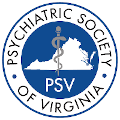Resources: About Mental Illness
Mental illness is an illness that affects or is manifested in a person’s brain. It may impact on the way a person thinks, behaves, and interacts with other people.
The term “mental illness” actually encompasses numerous psychiatric disorders, and just like illnesses that affect other parts of the body, they can vary in severity. Many people suffering from mental illness may not look as though they are ill or that something is wrong, while others may appear to be confused, agitated, or withdrawn.
It is a myth that mental illness is a weakness or defect in character and that sufferers can get better simply by “pulling themselves up by their bootstraps.” Mental illnesses are real illnesses — as real as heart disease and cancer–and they require and respond well to treatment.
The term “mental illness” is an unfortunate one because it implies a distinction between “mental” disorders and “physical” disorders. Research shows that there is much “physical” in “mental” disorders and vice-versa. For example, the brain chemistry of a person with major depression is different from that of a nondepressed person, and medication can be used (often in combination with psychotherapy) to bring the brain chemistry back to normal. Similarly, a person who is suffering from hardening of the arteries in the brain–which reduces the flow of blood and thus oxygen in the brain–may experience such “mental” symptoms as confusion and forgetfulness.
In the past 20 years especially, psychiatric research has made great strides in the precise diagnosis and successful treatment of many mental illnesses. Where once mentally ill people were warehoused in public institutions because they were disruptive or feared to be harmful to themselves or others, today most people who suffer from a mental illness — including those that can be extremely debilitating, such as schizophrenia — can be treated effectively and lead full lives.
Recognized mental illnesses are described and categorized in the book Diagnostic and Statistical Manual of Mental Disorders, Fourth Edition. This book is compiled by the American Psychiatric Association and updated periodically. It can be purchased through the American Psychiatric Press Inc.
Some of the more commonly known psychiatric disorders are depression; manic depression (also known as bipolar disorder); anxiety disorders, including specific phobias (such as fear of heights), social phobia, panic disorder, agoraphobia, obsessive-compulsive disorder, and generalized anxiety disorder; schizophrenia and other psychotic disorders, such as delusional disorder; substance abuse and disorders related to substance abuse; delirium; dementia, including Alzheimer’s disease; eating disorders, such as bulimia and anorexia; sleep disorders; attention-deficit/hyperactivity disorder; learning disorders; sexual disorders; dissociative disorders, such as multiple personality disorder; and personality disorders, such as borderline personality disorder and antisocial personality disorder.
Information from the American Psychiatric Association
